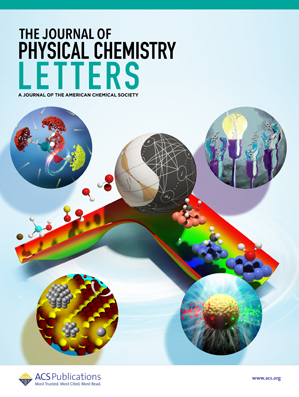Kinetic Mechanism for Fidelity of CRISPR-Cas9 Variants
IF 4.8
2区 化学
Q2 CHEMISTRY, PHYSICAL
引用次数: 0
Abstract
CRISPR-Cas9 is a nuclease creating DNA breaks at sites with sufficient complementarity to the RNA guide. Notably, Cas9 does not require exact RNA–DNA complementarity and can cleave off-target sequences. Various high-accuracy Cas9 variants have been developed, but the precise mechanism of how these variants achieve higher accuracy remains unclear. Here, we develop a kinetic model of Cas9 substrate selection and cleavage parametrized by data from the literature, including single-molecule Förster resonance energy transfer (FRET) measurements. Based on observed FRET transition statistics, we predict that the Cas9 substrate recognition and cleavage mechanism must allow for HNH domain transitions independent of substrate binding. Additionally, we show that the enhancement in Cas9 substrate specificity must be due to changes in kinetics rather than changes in substrate binding affinities. Finally, we use our model to identify kinetic parameters for HNH domain transitions that can be perturbed to enable high-accuracy cleavage while maintaining cleavage speeds.

CRISPR-Cas9变体保真度的动力学机制
CRISPR-Cas9是一种核酸酶,可以在与RNA向导具有足够互补性的位点上产生DNA断裂。值得注意的是,Cas9不需要精确的RNA-DNA互补,可以切割脱靶序列。已经开发出了各种高精度的Cas9变体,但这些变体如何实现更高精度的确切机制尚不清楚。在这里,我们建立了一个Cas9底物选择和裂解的动力学模型,该模型由文献数据参数化,包括单分子Förster共振能量转移(FRET)测量。根据观察到的FRET转换统计,我们预测Cas9底物识别和切割机制必须允许独立于底物结合的HNH结构域转换。此外,我们发现Cas9底物特异性的增强一定是由于动力学的变化,而不是底物结合亲和力的变化。最后,我们使用我们的模型来确定HNH结构域跃迁的动力学参数,这些参数可以被扰动以实现高精度的解理,同时保持解理速度。
本文章由计算机程序翻译,如有差异,请以英文原文为准。
求助全文
约1分钟内获得全文
求助全文
来源期刊

The Journal of Physical Chemistry Letters
CHEMISTRY, PHYSICAL-NANOSCIENCE & NANOTECHNOLOGY
CiteScore
9.60
自引率
7.00%
发文量
1519
审稿时长
1.6 months
期刊介绍:
The Journal of Physical Chemistry (JPC) Letters is devoted to reporting new and original experimental and theoretical basic research of interest to physical chemists, biophysical chemists, chemical physicists, physicists, material scientists, and engineers. An important criterion for acceptance is that the paper reports a significant scientific advance and/or physical insight such that rapid publication is essential. Two issues of JPC Letters are published each month.
 求助内容:
求助内容: 应助结果提醒方式:
应助结果提醒方式:


